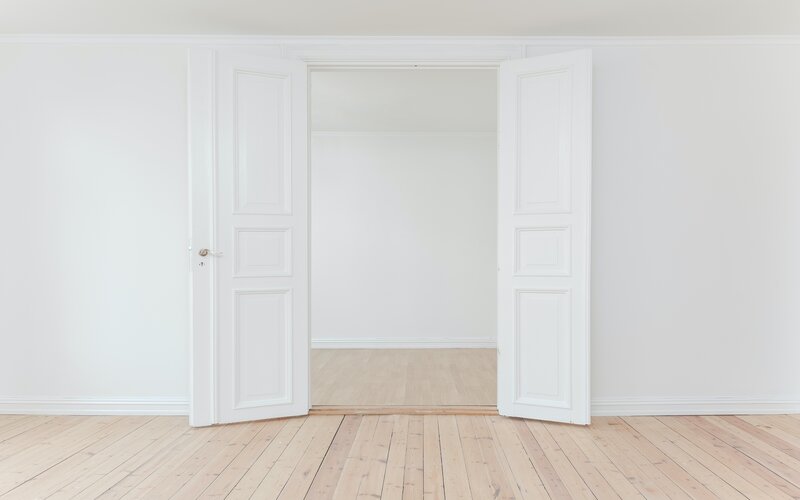Melbourne and Hobart recorded price drops in April while Sydney house values lost steam, according to CoreLogic's monthly house price index.
The national monthly pace of price growth more than halved, dropping from 0.7% in March to 0.3% in April, marking the smallest month on month movement since June last year.
House prices in capital city markets performed weaker compared to regional markets, up 0.5% compared to 0.2%.
CoreLogic head of research Tim Lawless said the April figures show the housing market looks "remarkably resilient" considering the rapidly weakening economic conditions and disruption the pandemic has had on the market.
“The Australian version of this global health and economic crisis is only a month-and-a-half old, and it looks inevitable that there will be some downwards pressure on housing values over the coming months," Mr Lawless said.
"The magnitude of housing value falls depends on a broad range of factors with most hinging on the timing and extent of social distancing policies being lifted.
“The good news is that Australia has managed to flatten the spread of the virus more effectively and efficiently than expected and we are already seeing a subtle easing of social distancing policies in some states.
"An early return of economic activity should support a lift in consumer spirits which in turn should see housing market activity sparking back to life.”
Buying a home or looking to refinance? The table below features home loans with some of the lowest variable interest rates on the market for owner occupiers.
According to CoreLogic, estimates of settled sales plunged by 40% in April as buyers withdrew from the market and listing numbers dried up.
Activity across CoreLogic’s ‘RP Data’ platform, where most real estate agents do their research to prepare a property for sale, was down by 60% before Easter, another signal that industry activity has been hit hard by the drop in active buyers and sellers as well as policies preventing open homes and onsite auctions.
According to data from SQM Research, the number of unsold properties is piling up, prompting concerns that a surplus of stock could hurt the housing market's recovery.
SQM Research Managing Director Louis Christopher said confidence in the market is low.
"SQM Research has been monitoring all scheduled auctions as per the tables below, and it is clear that those properties that have been re-advertised as a private treaty, have largely not sold," Mr Christopher said.
"If there were plenty of buyers in the market, more of these properties would have sold by now. But they haven’t. The properties are just sitting there.
He said the freeze on migration as a result of the pandemic will result in a surplus of stock.
"The market will still need to deal with a massive burgeoning hole in underlying demand this year which is as a result of the freeze up in net migration.
"As outlined over at Twitter late last week, I am conservatively expecting a surplus of well over 120,000 properties remaining unoccupied (and looking for an occupier) this year if net migration continues to be frozen for most of 2020.
"That is going to be one major hangover for the housing market, particularly for the rental market. Indeed, we are now already recording a surge in rental listings."
Change in dwelling values to April 30, 2020
| Month | Annual | Median Value | |
| Sydney | 0.4% | 14.3% | $889,992 |
| Melbourne | -0.3% | 12.4% | $695,761 |
| Brisbane | 0.3% | 3.8% | $507,982 |
| Adelaide | 0.4% | 1.5% | $439,397 |
| Perth | 0.2% | -2.5% | $448,355 |
| Hobart | -0.1% | 5.0% | $484,645 |
| Darwin | 1.7% | -2.7% | $402,225 |
| Canberra | 0.0% | 4.3% | $626,997 |
| Combined capitals | 0.2% | 9.7% | $647,414 |
| Combined regional | 0.5% | 3.2% | $396,070 |
| National | 0.3% | 8.3% | $557,739 |
Source: CoreLogic
April housing market by the numbers
The steam came out of the Sydney housing market, with property values growing by a modest 0.4% during April.
House prices in Melbourne dropped the most, falling by -0.3%, while Hobart recorded a -0.1% drop.
Across the other capital cities, Brisbane house prices recorded a small lift of 0.3% and Adelaide 0.4%, while Perth values grew by 0.2%.
Property values in Darwin grew the most, up by 1.7% in April.
While some economists are forecasting a worst-case 30% drop in house prices, Mr Lawless said a "variety of factors will help to insulate home values from a material downturn".
"A key factor is the leniency provided to distressed borrowers affected by COVID-19 by Australian banks. Eligible borrowers can take advantage of payment holidays over a six month window, by which time the economy will hopefully be in better shape," he said.
"This policy is central to limiting the flow of distressed properties onto the market, which could have otherwise been a source of more significant downwards pressure on home values."
Mr Lawless noted the high rate of unemployment is likely to have the most impact on areas of the workforce that have lower rates of home ownership.
"The potential for stronger labour market conditions amongst workers that have a higher rate of home ownership is another factor that should help to keep the number of distressed properties to a minimum," he said.
"There is also the unprecedented level of stimulus to consider, which will help to keep businesses afloat and workers in a paying job. A sharp reduction in advertised supply levels is another factor helping to safeguard home values amidst a fall in buyer demand."
Mr Lawless said next month's home value results will give a clearer picture of the direction of housing markets.
"One of the most important indicators to follow will be measures of consumer sentiment. If consumer spirits start to bounce back to more normal levels, this is when we should start to see housing activity lift from their current low levels.”
The brunt of the economic impact of the virus will be felt most in the two largest capital cities, due to their reliance on overseas migration.
“Sydney and Melbourne arguably show a higher risk profile relative to other markets due to their large exposure to overseas migration as a source of housing demand, along with greater exposure to the downturn in foreign students, stretched housing affordability and already low rental yields that are likely to reduce further on the back of rising vacancy rates and lower rents," Mr Lawless said.
The most expensive housing markets are slowing the fastest, according to the report. The top end of the market was growing 6.6% late last year but has slowed to 2.4% in the three months ending in April.
The top end of Melbourne's housing market was the biggest drag on the monthly house price numbers, with values down 0.8% in April.
"Premium housing markets have previously been more reactive to changes in the economic environment, and this trend is once again becoming apparent," Mr Lawless said.

Ready, Set, Buy!
Learn everything you need to know about buying property – from choosing the right property and home loan, to the purchasing process, tips to save money and more!
With bonus Q&A sheet and Crossword!



 Denise Raward
Denise Raward


 Jacob Cocciolone
Jacob Cocciolone
 Brooke Cooper
Brooke Cooper

